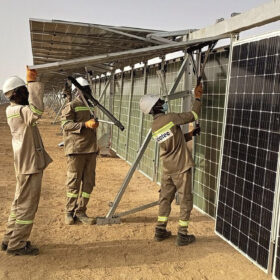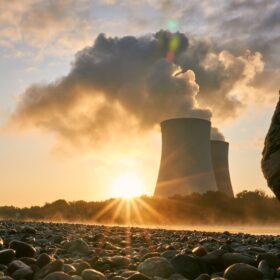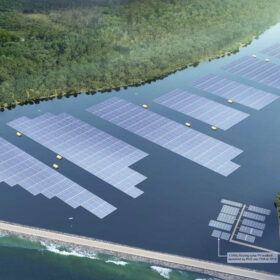Quasi-solid-state magnesium-ion battery achieves energy density of 264 Wh/kg
Researchers at the University of Hong Kong (HKU) have developed a quasi-solid-state magnesium-ion battery with a voltage plateau at 2.4 V and an energy density of 264 Wh/kg. It surpasses the performance of current magnesium-ion batteries and almost matches the performance of lithium-ion batteries.
Europe should produce its own green hydrogen
As the cost of generating clean energy continues to fall, producing green hydrogen in Europe, rather than importing it from Africa – with all the transport costs and raised carbon footprint that would entail – is beginning to look like an increasingly viable option.
Weekend Read: Install grid-connected solar, rinse, repeat
Will a redeployable solar and energy storage solution be the answer to unreliable grid electricity across much of Africa, as its developer proposes? Or will it merely be a temporary solution that will see cash-strapped utilities kick the can of universal energy access further down the road?
Solar on farmland, rather than nuclear, should shape Italy’s energy mix
Matteo Salvini, head of one of the parties in Italy’s coalition government, last year pointed to a future energy system based on rapidly deployed nuclear generators, sowing further doubt for renewables investors. Patrick Donati, founder of Italian independent power producer (IPP) Terrawatt, explains why nuclear will have no future in his homeland and why installing panels on a limited amount of farmland – rather than costly agrivoltaics – could be a necessary short-term climate fix.
Lhyfe expanding hydrogen production with focus on offshore wind
Jérémy Langon, head of energy sourcing and site development for Lhyfe, tells pv magazine that the France-based hydrogen producer is focusing on a combination of renewable sources, including offshore wind, to scale up hydrogen production.
The ‘next big thing’
The PV industry in Southeast Asia has come a long way since guest author Ragna Schmidt-Haupt, partner at Everoze, reported on solar financing innovation in the region more than a decade ago. In this article, she outlines five factors for success, the newest of which has the potential to become a game changer, and not only in Southeast Asia.
Weekend Read: Data harvesting
Mounting system manufacturers back their technology but farmers still have questions about the realities of solar on agricultural land. Ramping up research on how agrivoltaics affect farming yields could provide vital answers.
Local authorities can lead net zero charge
With metropolitan-borough and city councils in England and Wales already driving decarbonization initiatives, local government bodies could do so much more if given adequate powers and funding.
New software tool unlocks BIPV design
RMIT University in Australia has developed new software that integrates product, regulation, technical, economic, and construction data. It helps architects and engineers to estimate the cost of building-integrated photovoltaics (BIPV) during the conceptual design phase.
Weekend Read: Barren soil for agrivoltaics
PV has real potential on agricultural land in Italy, where multinationals and entrepreneurs alike share an enthusiasm for solar innovation. This is being hindered by a piecemeal approach to regulation.










